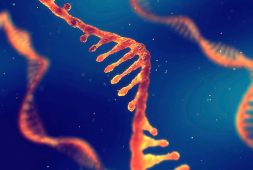
A recent investigation published in Nature Medicine has identified yeast cells as the underlying source of mucosal inflammation in Inflammatory Bowel Disease (IBD), encompassing conditions such as ulcerative colitis (UC) and Crohn’s disease (CD). This inflammation stems from abnormal immune cell activation.
Introduction
Inflammatory Bowel Disease (IBD) is a condition characterized by abnormal immune responses that lead to inflammation in the gastrointestinal (GI) tract. This inflammation is triggered by CD4+ T-cells reacting to gut microorganisms, although the specific targets of these cells are still unknown.
IBD is a chronic and debilitating illness that significantly impairs patients’ quality of life. Researchers have been striving to identify the microbial targets and T-cell types involved in these conditions, especially considering the variations between different subgroups of IBD patients.
One subset of T helper (TH) cells, known as TH17 cells, plays a regulatory role by modulating potentially harmful inflammatory responses to pathogens. In patients with IBD, there are higher levels of interleukin (IL)-17A-producing T-cells in the intestinal mucosa, indicating a potential impairment in the function of TH17 cells. Interestingly, attempts to treat IBD with IL-17 antagonists have not yielded positive results in Crohn’s disease (CD) and have even worsened the condition in some patients.
The behavior of TH17 cells can vary based on specific circumstances. For instance, if TH17 cells also express interferon (IFN)-γ or granulocyte-macrophage colony-stimulating factor (GM-CSF), they could become pathogenic rather than protective. It has been observed that IFN-γ-positive TH1 cells are elevated in the gut mucosa of CD patients but not in those with ulcerative colitis (UC).
Fungi are an integral part of the gut microbiome, with Candida albicans, a yeast-like microorganism, being a crucial commensal organism that regulates the immune response. Candida albicans induces TH17 cells, promoting the secretion of mucosal antibody immunoglobulin A (IgA) from the gut mucosa as well as systemic IgG antibodies.
It is still unclear whether these yeast cells are a result or a cause of inflammation in IBD patients. Interestingly, antibodies to Saccharomyces cerevisiae, commonly known as ‘baker’s yeast’ antibodies (ASCA), have been found in the blood of CD patients. These antibodies have the ability to bind to Candida albicans antigens.
The focus of the current study was to investigate how yeast in the GI tract influences CD4+ T-cell responses and contributes to inflammation in Crohn’s disease.
Findings in the Study
The study revealed a heightened response of CD4+ T-cells in patients with Crohn’s disease (CD) when exposed to yeast. Specifically, individuals with CD displayed an increased reactivity of CD4+ T-cells in response to yeast, a reaction that was notably absent in CD patients without this response. Moreover, among CD patients exhibiting anti-Saccharomyces cerevisiae antibodies (ASCA) in their serum, indicative of disease severity, there was a significant elevation in T-cell reactivity towards various yeast species.
This heightened T-cell response was observed not only in the bloodstream but also in the inflamed gut mucosa of CD patients with ASCA. Interestingly, these reactive T-cells demonstrated an increased response to certain yeast species used as probiotics for inflammatory bowel disease (IBD) treatment, highlighting a complex interaction between the immune system and yeast varieties.
In ASCA-positive CD patients, a robust inflammatory response by TH1 cells was noted, characterized by elevated secretion of the inflammatory cytokine IFN-γ, particularly against non-Candida albicans fungi. Furthermore, these T-cells displayed cytotoxic characteristics, capable of attacking gut epithelial cells. This cytotoxic response was also observed in close relatives of CD patients with IBD, indicating a potential genetic predisposition to this aberrant immune reaction.
The persistence of these abnormal CD4+ T-cell responses is thought to be due to their cross-reactivity, enabling them to remain chronically activated in the presence of various yeast species. This chronic activation leads to a cytotoxic phenotype, potentially explaining the chronic and treatment-resistant nature of CD. The clonal expansion of these T-cells, combined with their high reactivity to multiple yeast species, supports the notion that repeated exposure to conserved antigens across different yeast varieties selects these specific T-cell clones.
In summary, the study provides insights into the aberrant immune responses seen in CD patients, particularly those with ASCA, shedding light on the chronic and treatment-resistant aspects of the disease. The findings underscore the importance of understanding these complex interactions between the immune system and different yeast species.
Implications Found
Yeasts play a significant role in triggering heightened TH1 cytotoxic cell responses, which are responsible for the inflammatory immune reactions observed in a specific subset of patients with Crohn’s disease (CD). This subgroup of CD patients experiences an abnormal immune response characterized by the activation of TH1 cells, a type of T-helper cell involved in cell-mediated immunity. Interestingly, Candida albicans, a common yeast species, is normally involved in maintaining the balance of T-cell immunity and promoting regulatory TH17 cell responses, which help regulate immune reactions.
However, in some cases, the immune system’s chronic stimulation by different types of yeasts, excluding C. albicans, leads to the clonal expansion of CD4+ TH1 cells. These cells become cross-reactive, meaning they recognize similar antigens across various yeast species. This phenomenon occurs due to the recognition of conserved antigens shared by many yeasts. Both fungi that reside naturally in the body (commensal fungi) and those derived from food can contribute to the activation of TH1 cytotoxic cells. Interestingly, TH17 cells responsive to C. albicans seem to resist these influences, suggesting a specific resistance mechanism within the immune system.
These T-cells responsive to yeasts present a potential target for therapeutic interventions in Crohn’s disease. One approach could involve depleting these T-cells or promoting the activity of regulatory T cells (T regulatory cells) specific to the antigens found in yeasts. By better understanding the mechanisms underlying these immune responses, researchers aim to develop targeted therapies that can modulate the immune system, potentially offering effective treatments for patients with Crohn’s disease. Further research is necessary to identify the root cause of the abnormal TH1 response in CD patients and explore precise strategies for therapeutic interventions.
“This could reveal a general mechanism of how selection of cross-reactive T cells may allow adaptive immunity to cope with the enormous diversity of microbial antigens which, if not properly regulated, could come at the expense of fostering chronicity and contribution to therapy resistance in IBD due to persistent antigen activation.”



